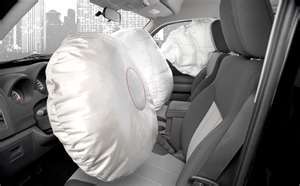Airbags and Seat Belts Shown to Prevent Kidney Injuries
 |
ORLANDO, FL--May 16, 2014: Airbags and seat belts not only protect people from head and chest injuries during car accidents, they may also protect the kidneys, according to a new study at the 109th Annual Scientific Meeting of the American Urological Association (AUA). The study will be presented to the media during a special press conference on Friday, May 16 at 10:30 a.m. at the Orlando County Convention Center. This session will be moderated by AUA past President Jack W. McAninch, MD, professor of urology at the University of California, San Francisco.
Each year, motor vehicle collisions (MVCs) lead to a significant number of high-grade renal injuries. Vehicle protective devices such as seat belts and airbags have saved lives and prevented injuries for many individuals involved in MVCs. Seat belts aim to prevent chest and other internal injuries by spreading the force of a collision across two of the human body's strongest areas: the pelvis and upper chest. Air bags are designed to cushion the contact between a vehicle occupant and the steering wheel, dashboard and in some cars, vehicle doors. Knowing this, many still do not use seat belts or airbags when in a vehicle, which prompted researchers from Advocate Illinois Medical Center, Baylor College and New York University to compare the effectiveness of protective devices on high-grade renal injuries and nephrectomy rates.
Researchers queried 2010 to 2011 National Trauma Data Bank data for MVC occupants with renal injuries. Subjects were stratified by protective device and airbag deployment, and surgical management was evaluated for nephrectomy. Intergroup comparisons were analyzed for renal injury grades, nephrectomy, length of stay, and mortality with chi-square or one-way ANOVA. Research showed, of the 287,174 MVCs reviewed 2,580 renal injuries occurred. Further results showed:
When used together, airbags and seat belts reduced the relative risk of high-grade renal injuries by nearly 23 percent and the rates of nephrectomy by more than half. Injured occupants without a protective device had a greater rate of high-grade renal injury (44.3 percent) compared to those with seat belts (40.1 percent), airbags (42.3 percent) and seat belts with airbags (34.1 percent). Injured occupants without a protective device increased the rate of nephrectomy (47.5 percent) compared to those with seat belts (23.7 percent), airbags (14.4 percent) and seat belts with air bags (14.4 percent).
"Motor vehicle accidents can cause a variety of serious personal injuries, including high-grade renal trauma," said Dr. McAninch. "These data clearly demonstrate occupants who wear seat belts and whose airbags deploy during an accident have less of a chance of suffering high-grade renal injury or the need for a nephrectomy as compared to those who do not wear a seat belt or have an airbag. This knowledge can support the many public awareness campaigns regarding the pros and cons to wearing seat belts."
Researchers concluded occupants of MVCs with protective devices have reduced rates of high-grade renal injury and nephrectomy.


